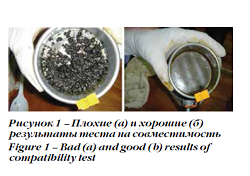- Home page /
- Technologies /
- Our publications about technologies /
- An integrated approach and the experience of acidizing in...
An integrated approach and the experience of acidizing in the challenging Еnvironment of carbonate reservoirs of the Volga-Ural region
 The Volga-Ural basin is one of the largest oil-producing regions in Russia. Orenburg region is an essential part of Volga-Ural basin and represents most of the challenges existing in other parts of the basin. More than a half of the wells produce exclusively from carbonate formations and require periodic acidizing treatments to maintain economical production. Carbonate stimulation treatments are usually based on pumping of hydrochloric acid into formation using special diverters to maximize zone coverage by acid treatment. Some of the formation properties in the Volga-Ural basin create additional challenges for successful acidizing treatment. These challenges include but are not limited to significant reservoir pressure depletion, high water cut, formation heterogeneity with high and low permeable streaks, low reservoir temperature, crude oil tending to form emulsion and sludge, enormous thief zones created by previous acidizing treatments. Uncertainties in formation properties in many cases make the task even more complex.
The Volga-Ural basin is one of the largest oil-producing regions in Russia. Orenburg region is an essential part of Volga-Ural basin and represents most of the challenges existing in other parts of the basin. More than a half of the wells produce exclusively from carbonate formations and require periodic acidizing treatments to maintain economical production. Carbonate stimulation treatments are usually based on pumping of hydrochloric acid into formation using special diverters to maximize zone coverage by acid treatment. Some of the formation properties in the Volga-Ural basin create additional challenges for successful acidizing treatment. These challenges include but are not limited to significant reservoir pressure depletion, high water cut, formation heterogeneity with high and low permeable streaks, low reservoir temperature, crude oil tending to form emulsion and sludge, enormous thief zones created by previous acidizing treatments. Uncertainties in formation properties in many cases make the task even more complex.
Carbonate stimulation practices were continuously improving during the last six years in Orenburg region. It started with implementation of degradable balls and polymer self-diverting acid to improve zone coverage. Later, viscoelastic self-diverting acid was introduced to eliminate retained damage associated with polymer. At the same time, viscoelastic selective diverter was used to minimize risk of water cut increase after the treatment. Finally, foam diversion with and without small-diameter coiled tubing (CT) placement was implemented to account for reservoir pressure depletion. Many lessons were learned during this period with recommendations for better technologies utilization at different reservoir and wellbore conditions.
The majority of the fields in Orenburg region are old, and this implies that quality of well candidates became worse from year to year. However, with continuous improving stimulation practices and rigorous quality control, we manage to maintain stimulation at economic level and even increase work scope compared with previous years. This paper will describe experience gained during six years of acidizing treatments in Orenburg region with lessons learned and best practices.
.....
Full version of the article can be downloaded here.
-
24.12.2021
Gazprom Neft, Skoltech and the Khanty-Mansi autonomous okrug-Yugra are developing technologies to produce hard-to-recover oil
-
17.12.2021
Gazprom neft establishes Russia’s first test facilities for developing hard-to-recover oil production technologies
-
25.11.2021
LUKOIL successfully tries out casing drilling
-
08.11.2021
Gazprom Neft and Gazprom Burenie to support the development of Russia’s first oil- and gas-well drilling robot

